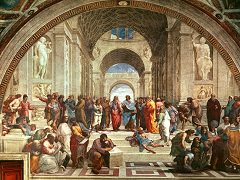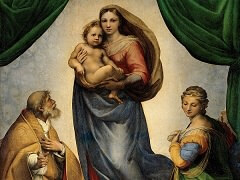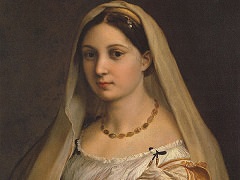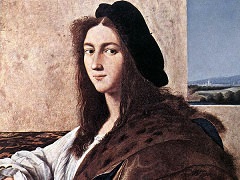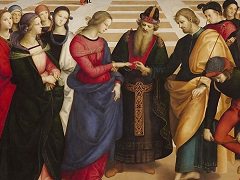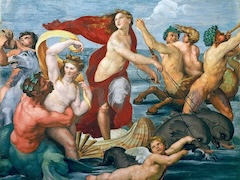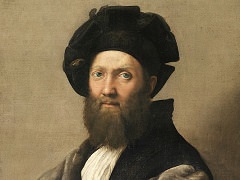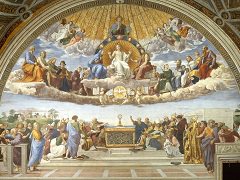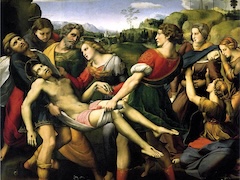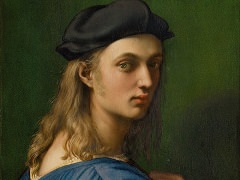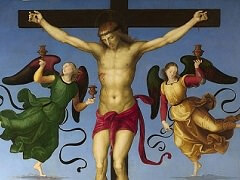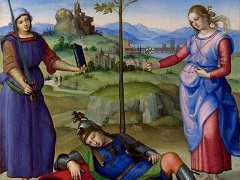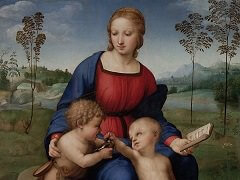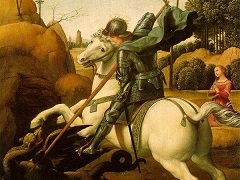The Parnassus - by Raphael
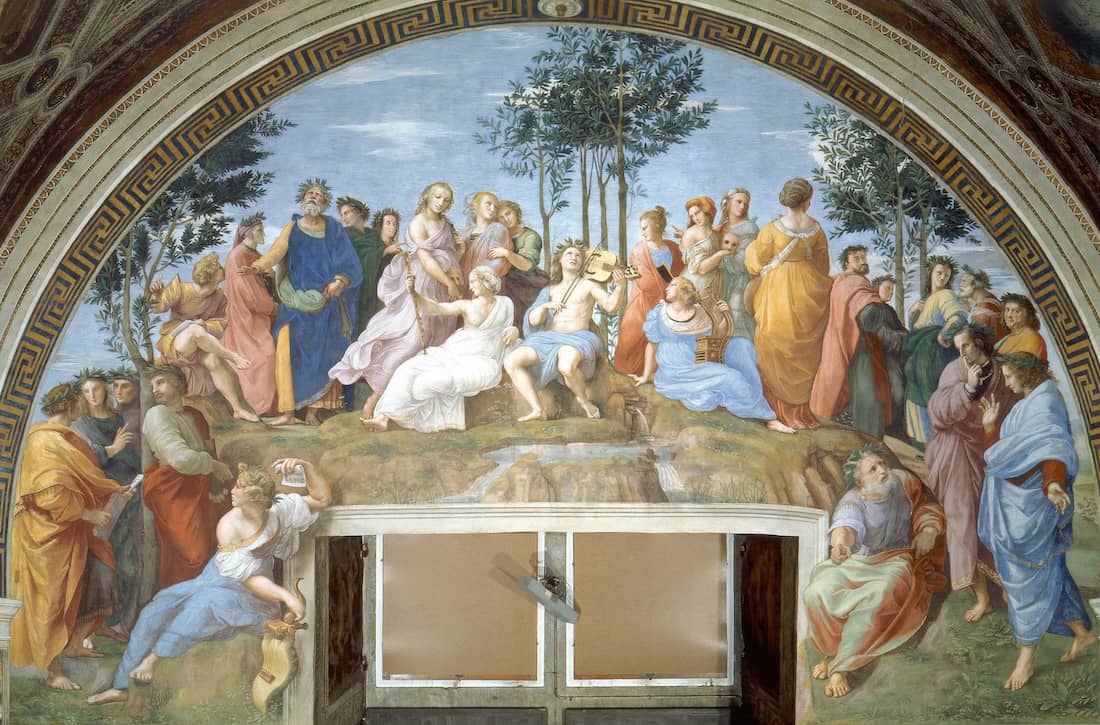
The School of Athens illustrates the concept of Philosophy, The Disputation over the Sacrament, Theology. Parnassus, with the seated Apollo in the center, represents, in the same context, Poetry, as is evidenced by the personification in a tondo directly overhead. Here the greatest writers of the ancient world congregate and are interspersed with the chief exponents of the craft from postclassical Italy, including some of Raphael's own friends and contemporaries. These are accompanied by the nine Muses, arranged on either side of Apollo at the top of the hill , who act to inspire the poet. Calliope, the noblest of all, according to Hcsiod, reclines on the left side of Apollo and is balanced by Erato, whose name means "lovely one"; the others, standing, are grouped on either side of the composition, and in large measure their poses and even their instruments were copied from Roman sarcophagi. Apollo, a figural type probably based upon a seated Mars known from a small Roman bronze but confirmed by direct study from the model, holds an instrument that is modern. Its nine strings rather than the usual seven correspond to the total number of Muses shown in the fresco. This numerological metaphor is carried further within the fresco so that the poets may be seen as divided into two categories: nine ancients and nine moderns.
Compositional harmony and visual counterpoint characterize the fresco: the groups of figures are bound together by continuous lines and the single characters are represented in opposed but corresponding poses. Although the Parnassus lacks the high originality of the School of Athens, it demonstrates Raphael's illustrative ability. It is enriched by classical elements which must have held great appeal for a cultural class excited by the recent archaeological discoveries. Thus we must add Raphael's capacity to interpret contemporary taste to his genuine artistic skills.

